
Mega ADAS Comparison Test: Curvv EV vs Seltos vs Elevate vs Verna vs Astor vs XUV700 vs XC40 Recharge
Can driver assistance systems in the latest crop of cars be blindly trusted? Our mega ADAS comparison test brings you the answer.
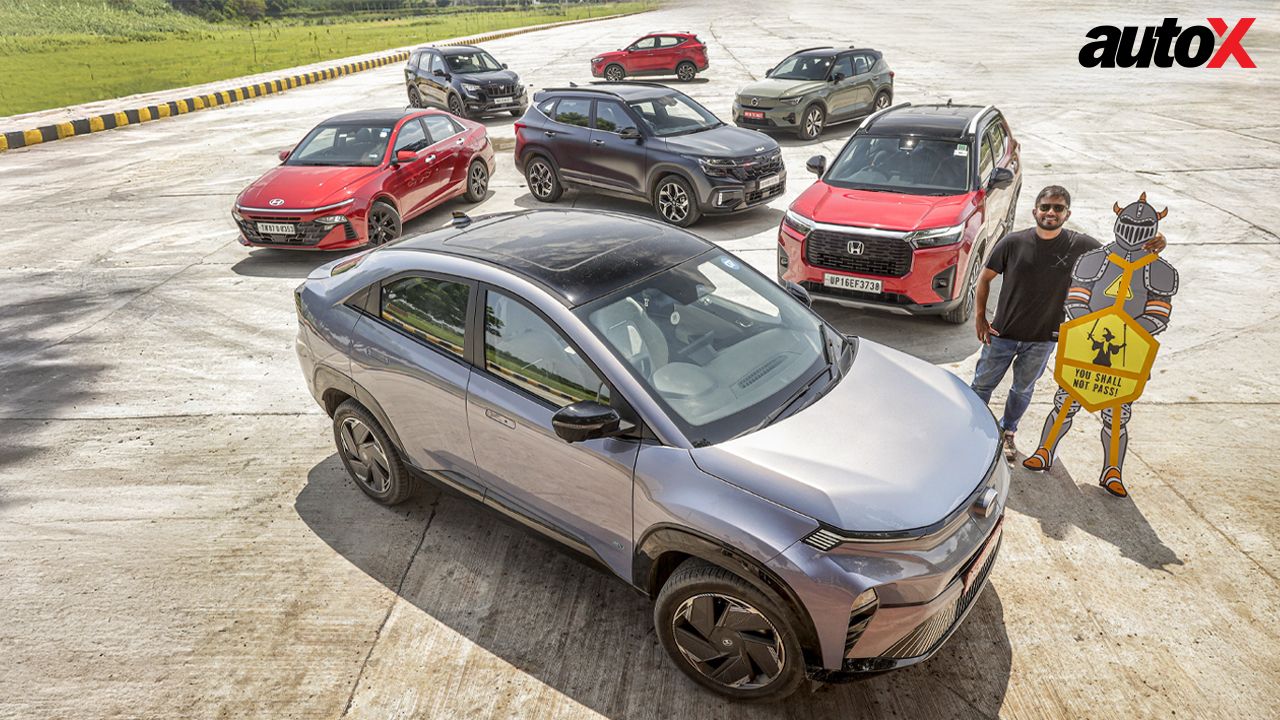
While Jesus may or may not take the wheel when you’re in trouble, technology certainly will, thanks to the rapid advancements in the automobile industry. Autonomous driving will soon be a reality – it already is in some parts of the world – and the good (or bad?) news is that even developing nations like ours are now heading in that direction. The wave of new car launches equipped with advanced driver assistance systems, or ADAS, in the mass market segment is clear evidence of this shift.
Now, sure, we may still be at Level 2 – Level 5 is full autonomy – at the moment, but ADAS is the next big thing in India. According to a study by CRISIL, a global analytics firm, the market for ADAS in passenger vehicles in India is expected to reach a staggering $1 billion by 2028 –a six-fold increase from $169 million in 2023. We are talking serious money here, folks.
A year ago, the ADAS trend was just gearing up to take over the Indian car market, and at that time, we compared these systems. But, now, we’re back with the second edition of our ADAS comparison test, and this time it’s even bigger than before.
For this comparo, we’ve gathered the ADAS-equipped vehicles from six of India’s best-selling car manufacturers – Hyundai, Tata, Mahindra, Kia, Honda, and MG. And yes, your eyes aren’t deceiving you – there’s a Volvo in the mix as well. Why, you ask? Well, you see, Volvo is considered the benchmark for safety in the automotive world, so, it made perfect sense to gauge these India-specific ADAS systems against what is the global gold standard.
ADAS for Dummies…
The test was divided into two parts – the first was conducted on a closed-off section to test the Automatic Emergency Braking (AEB), and the second was carried out in real-world conditions to assess the performance of other features, such as Lane Keep Assist, Adaptive Cruise Control, and so on.
For AEB tests, we got a little creative and built a human-size knight in shining, or rather reflective, armour. Each car was then driven at 40km/h for three attempts, with the detection set to Early/High Sensitivity in each case. So, curious to see how each contender performed? Well, turn the page to find out…
Honda Elevate ADAS: Consistency is the key
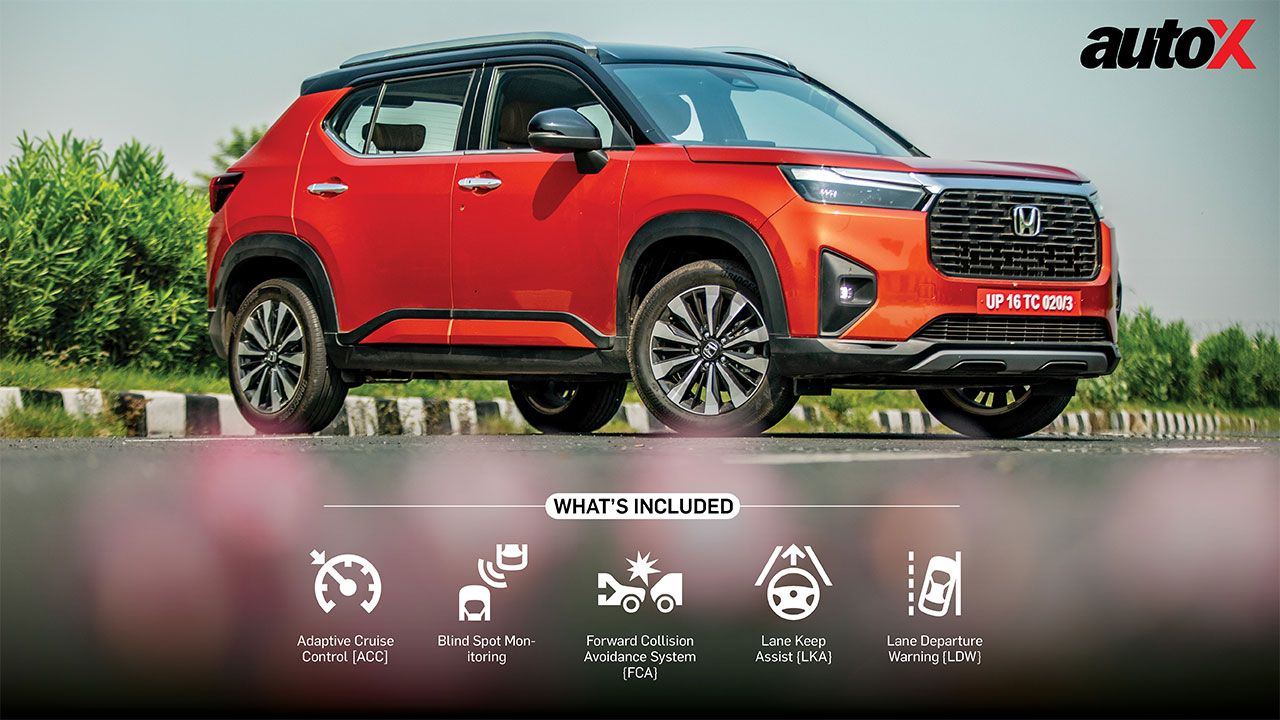
We kicked off the proceedings with a Honda. Why? Well, because last time, the Honda Sensing ADAS system impressed us the most with its consistency. This time, however, we used the Elevate instead of the City, even though the driver assistance systems are identical in both. So, how did it fare? Let’s break down the good and the bad.
As was the case last time, the forward collision warning and Automatic Emergency Braking (AEB) of the Honda turned out to be one of the most consistent systems in our tests, stopping exactly at the same position on all three occasions. The Elevate’s AEB also warns the driver way in advance about the impending impact, and if no action is taken by the driver, the system slams the brake in a rather comforting manner, especially in comparison to the others. The notion of ‘phantom braking’, usually associated with AEB systems, doesn’t quite apply here.
Another feature that really impressed us was Honda’s Lane Keep Assist (LKA) system. It works in a safe and predictable manner with minimal steering inputs and corrections. On a well-marked highway or expressway, it performs phenomenally, keeping the vehicle centred in the lane, without swerving left or right or making constant adjustments to the wheel. Even when the road curves, the system steers the vehicle meticulously, further building the driver’s confidence in the system’s capabilities.
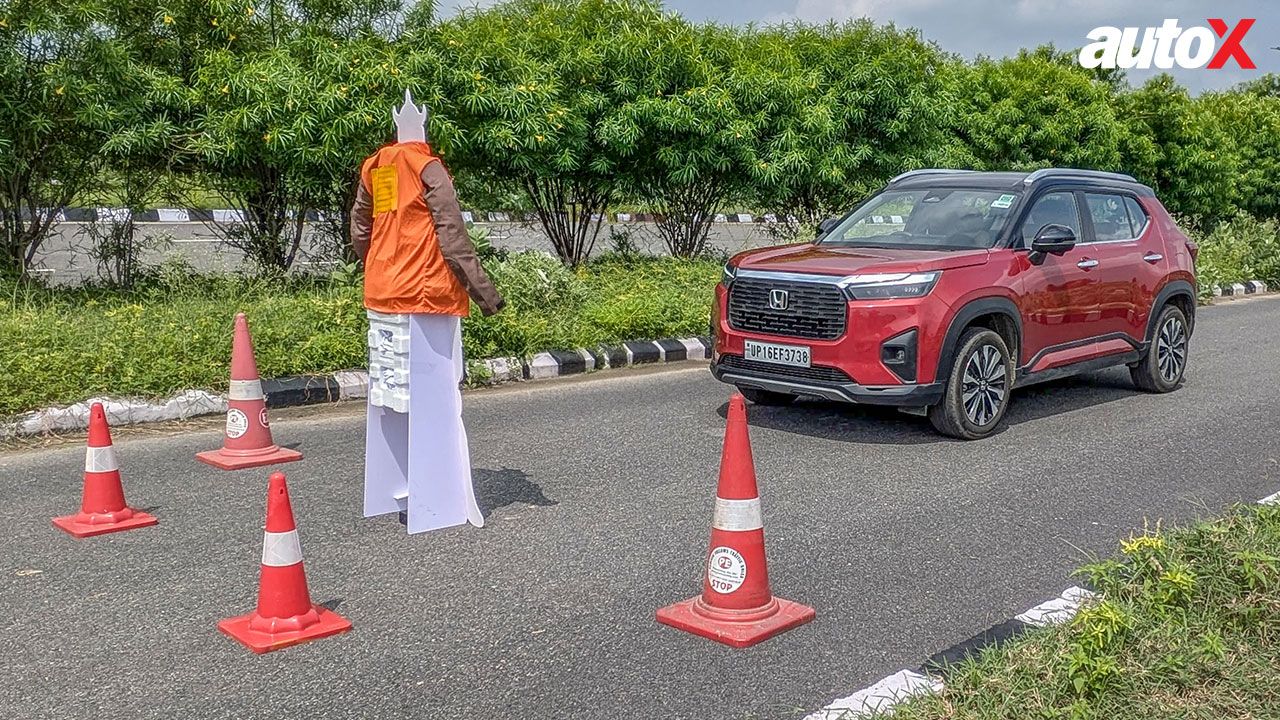
One of Honda’s ADAS system’s biggest advantages is its ease of use. The large and chunky buttons on the steering wheel allow you to quickly activate or deactivate functions like LKA, Lane Departure Waring, and Adaptive Cruise Control (ACC). AEB remains on by default, but you can turn it off using steering-mounted controls in just a few steps.
But, then, not all is rainbows and sunshine with the Honda Elevate’s ADAS. So, let’s now divert our attention towards the not-so-good bits of Honda’s driver assistance systems...
The Elevate’s Adaptive Cruise Control (ACC) doesn’t get the stop-and-go functionality, meaning it disengages once the vehicle in front slows down to speeds below 30km/h. What’s concerning is that this disengagement happens in a rather unnerving fashion and without any warning. It abruptly lets go of all the controls, which is a bit alarming. Also, since the Elevate relies solely on a camera for all of its ADAS functions, we found the ACC, even when set to the farthest distance, detects moving vehicles in front a little later than systems using a camera-radar fusion for ADAS features. This late detection results in aggressive deceleration, which doesn’t feel normal or safe. The Lane Departure Warning in the Elevate gets activated at a slightly higher speed threshold of 70km/h, compared to 60km/h in others. Lastly, since the Honda Sensing ADAS depends entirely on a camera for its operation, its performance is likely to be limited in bad weather conditions.
Also read: ADAS Comparison: Honda City vs Mahindra XUV700 vs Hyundai Ioniq 5 vs Mercedes-AMG EQS
The Dynamic Korean Duo: Hyundai Verna & Kia Seltos
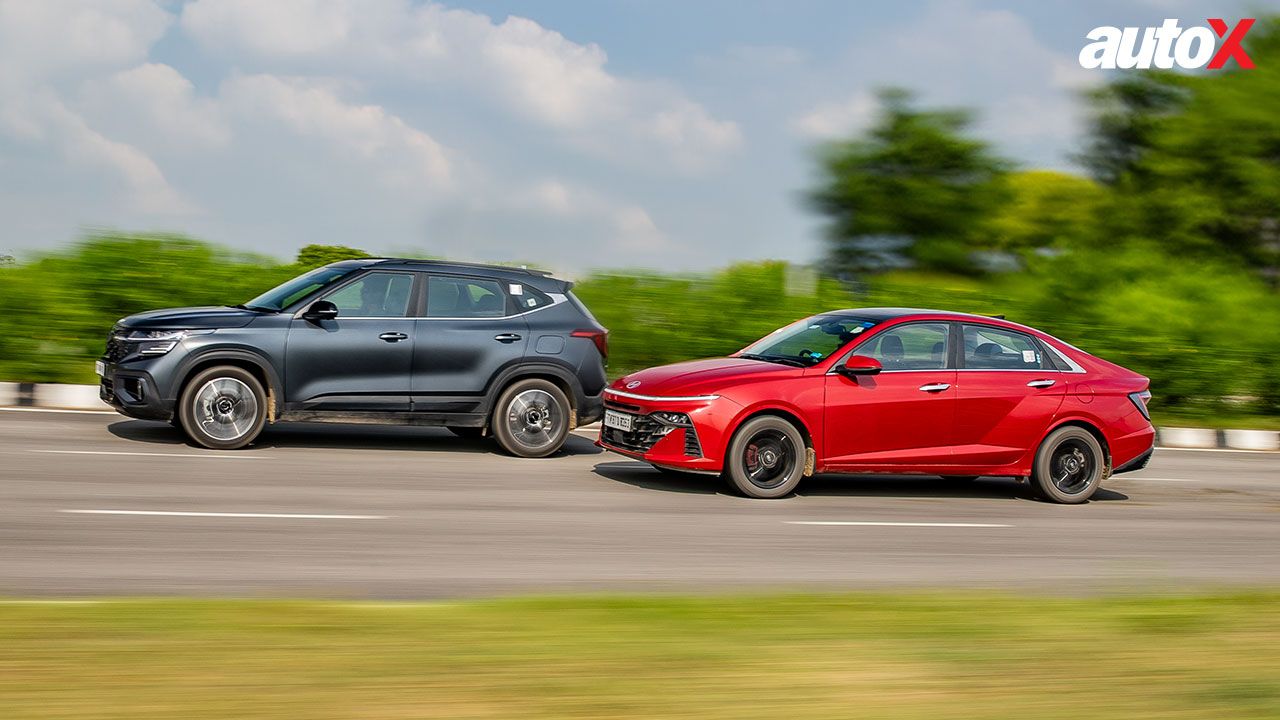
Last year, we tested Hyundai’s ADAS in the Ioniq 5, but this time, we decided to focus on the Verna, which is more relevant to the Indian market as it’s Hyundai’s first mass-market vehicle to feature Level-2 ADAS. In fact, the new Creta and the Kia Seltos – also a part of this test – have the same ADAS system.
Since the Verna and Seltos are two of the latest vehicles to feature driver assistance systems, they pack a lot more functions than most of the other cars in the segment. For instance, their Forward Collison Avoidance (FCA) or AEB system gets additional ‘Junction Turning’ functionality, which detects and brakes if there’s oncoming traffic while making a turn at an intersection. The Korean siblings also feature Rear Cross Traffic Alert, Safe Exit Warning, and more, which give them an edge over the others. The Verna and Seltos’ ADAS incorporates three radars – one at the front, and two at the rear – and a front camera. On paper, this clearly makes the Hyundai and Kia’s ADAS one of the superior systems, but how did they fare in our test? Let’s find out.
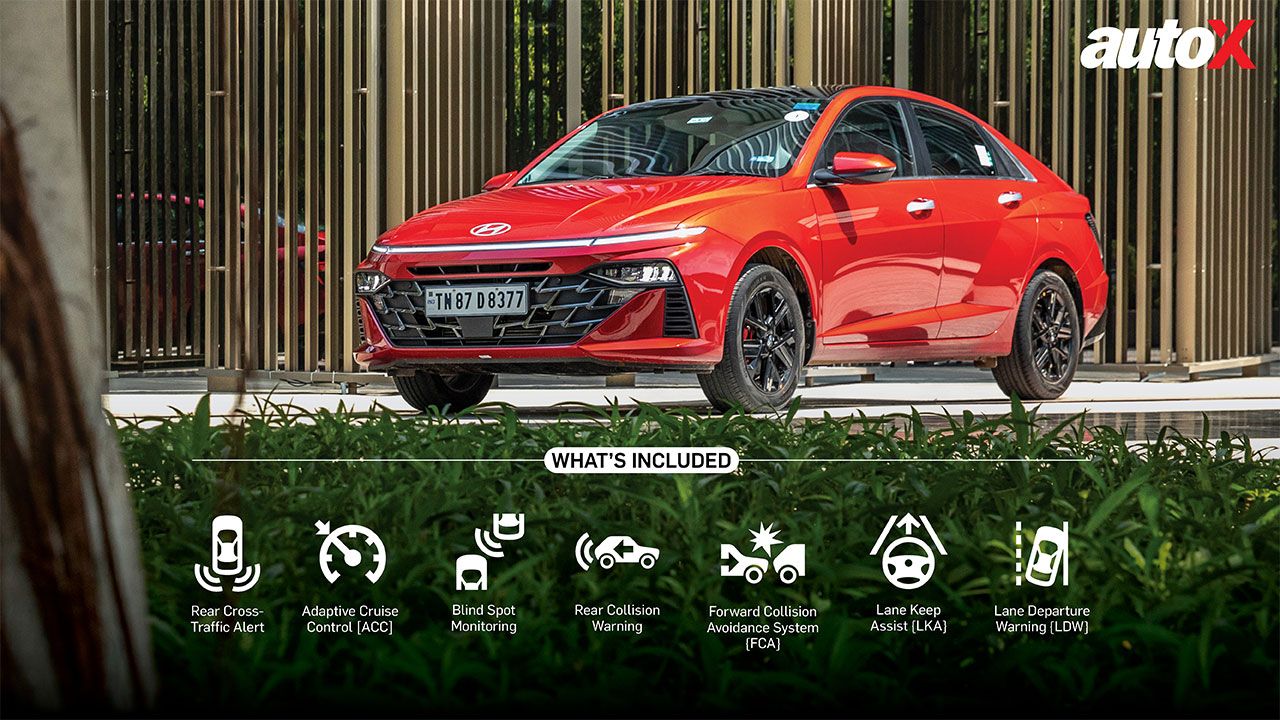
In the AEB test, both the Verna and Kia performed exceptionally well. They had no problems detecting our make-shift knight and braking on time. However, it’s important to note that unlike the Honda and many others, Hyundai and Kia’s AEB system doesn’t have an ‘Early’ detection option. It only lets you choose between Normal and Late. That said, it detected the obstacle well before time, and the warning lights and bells got activated quite early. It’s just that the system applies the brakes a little later than, say, the Honda’s AEB. Consequently, both the Verna and Seltos ended up stopping much closer to the dummy in all three attempts.
We also noticed a bit of fishtailing or skidding when the Verna braked, likely due to the combination of its hard, aggressive braking and the slightly worn tyres on our test car. The Seltos, on the other hand, performed a bit better in the AEB test. The Kia’s ADAS performed consistently well and brought the car to a halt in a more confident manner, without any fishtailing or skidding. It braked bang on time, and in all three attempts, it stopped the car at the exact same distance from the obstacle.
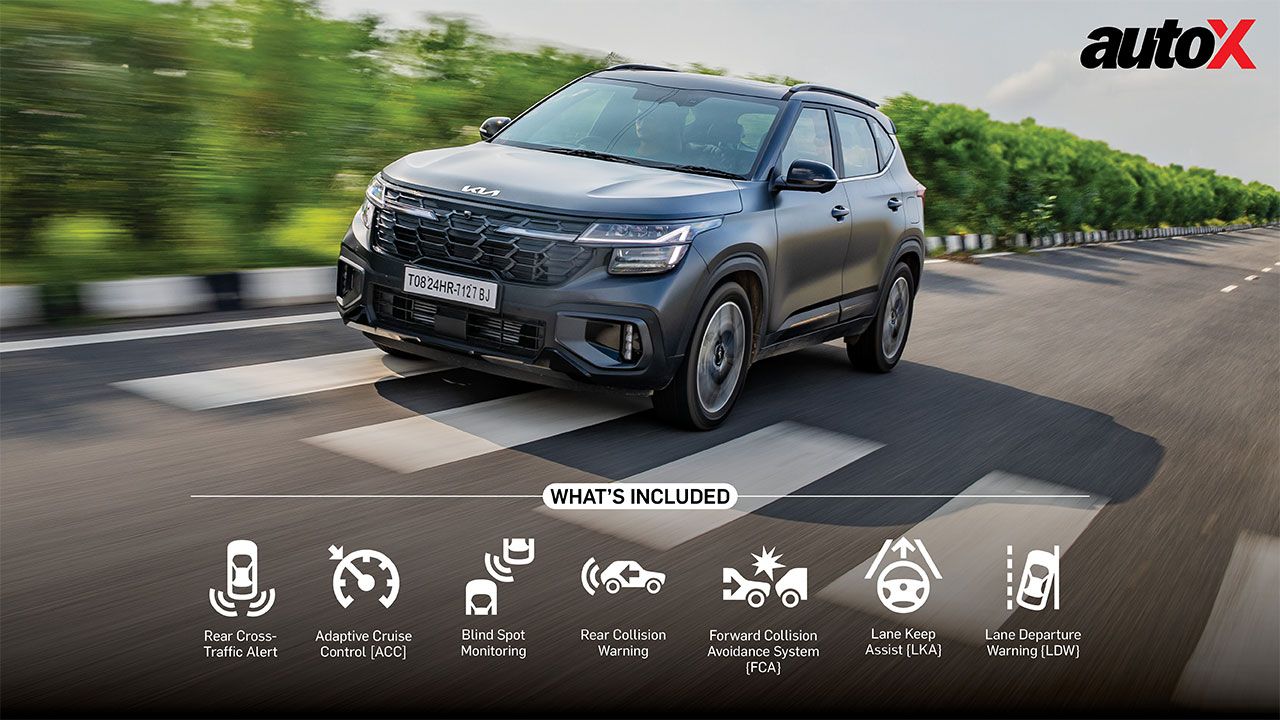
In terms of braking distance and consistency of the system’s performance, both the Verna and Seltos’ AEB showed no inadequacies. As with all AEB systems, the AEB in both vehicles releases the brakes after 5 – 6 seconds of the car coming to a halt – this happens regardless of whether or not the path is clear. However, it’s something that we noticed in all the cars here on test and found it to be a bit unusual. Additionally, in most vehicles, the AEB system only engages at speeds above 10km/h.
Where the Hyundai and Kia’s ADAS really impressed us was in the real-world ‘Indian’ driving conditions. It’s quite evident that the person or team behind the development of the ADAS functions for the Korean manufacturers spent a considerable amount of time driving on chaotic Indian roads, learning how to tailor the technology accordingly. In short, the ADAS in Verna and Seltos felt the most sophisticated and most fine-tuned system for our roads, among all the cars we tested.
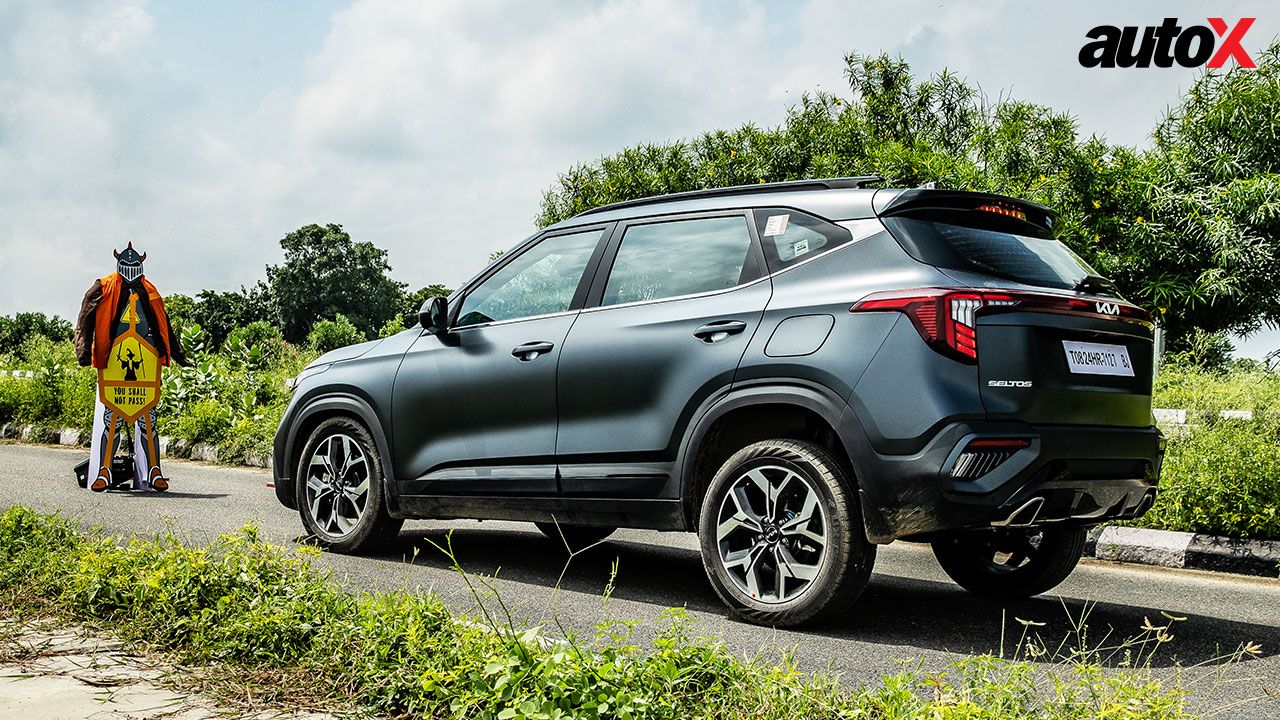
In both cars, the Lane Keep Assist (LKA) and Lane Departure Warning (LDW) functions worked flawlessly. The LKA kept the vehicle perfectly centred within the lane, with minor steering inputs or corrections. It remains rock solid and inspires confidence, and even as the road ahead curves, it progressively steers the vehicle accordingly. What’s more, the LKA on these vehicles can be activated from the get-go – there’s no set speed limit for this feature. The LDW, though, only gets activated at 60km/h. Another great thing about the Verna and Seltos’ LKA is that it can be activated independently of LDW. It’s a great feature because It allows you to swerve out of a lane in case of some emergency, without the system trying to pull you back into the lane. In simple terms, it allows you to take control and change lanes. And once you enter another lane, the LKA detects this and resumes operation automatically, making it both practical and intuitive.
Hyundai and Kia’s Adaptive Cruise Control is a work of art. It features Stop-and-Go functionality, meaning it can follow the vehicle ahead, maintaining a safe distance, to a complete halt and then set off again. However, if the vehicle ahead remains stationary for more than three seconds, the system won’t automatically start accelerating. Instead, you’ll receive a prompt on the instrument cluster to press the accelerator pedal to resume operation.
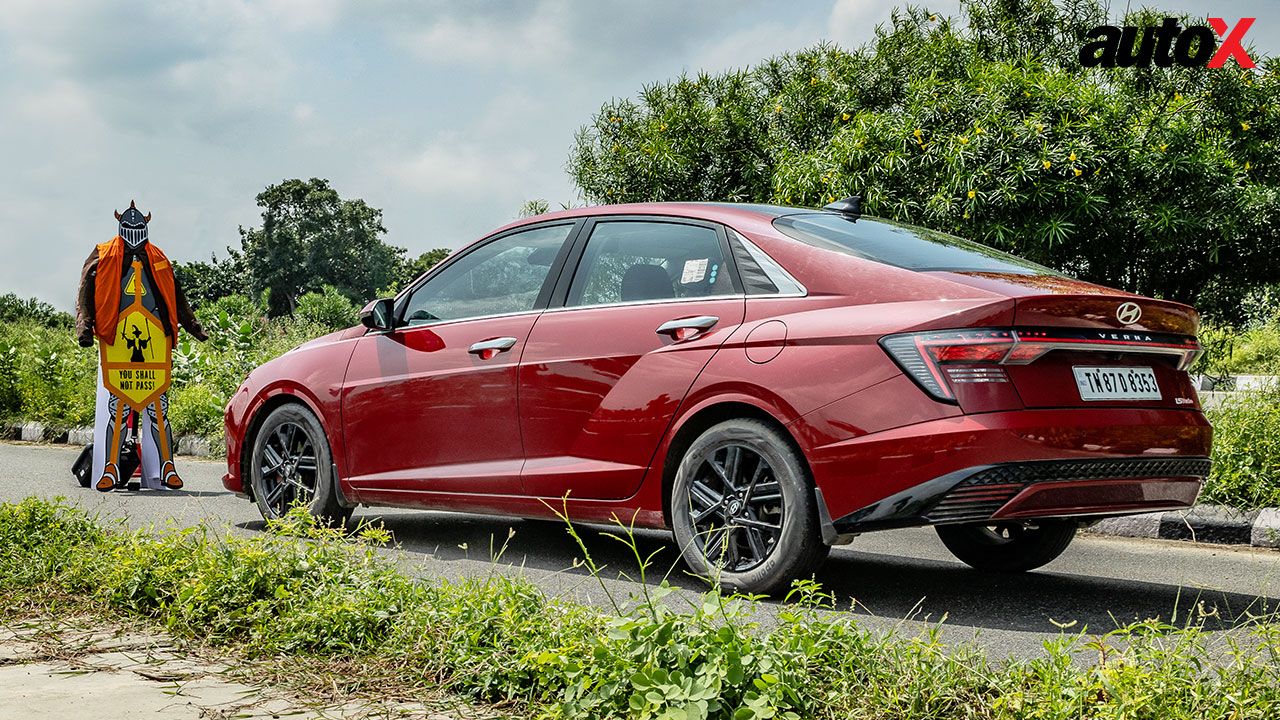
The ACC function can be activated from 30km/h and works with or without LKA / LDW, meaning you can use this function on roads without lane markings. Like most ACC systems, the Hyundai and Kia’s ACC also allows you to set the distance from the vehicle in front. However, again, it does a couple of things differently – or simply better. For instance, instead of decelerating aggressively when the vehicle in front slows down or when another vehicle suddenly cuts into your lane, the Hyundai and Kia’s system gently reduces speed, providing a smoother and more comfortable experience.
Additionally, once the vehicle in front accelerates or moves out of the way, and the road ahead is clear, Hyundai and Kia’s ACC allows you to choose between the intensity of acceleration – light, medium, and strong – to return to your set cruise speed. In most other cars, this is not the case, as the acceleration is always sudden, almost like being catapulted forward.
Another useful feature is Rear Cross Traffic Alert, which is a great add-on feature when reversing out of a parking space. When a vehicle enters your blind spot, the system first issues a loud beep and warning, and if you don’t slow down or stop in time, it automatically applies brakes, adding an extra layer of safety.
On the whole, the ADAS systems of the Verna and Seltos were mighty impressive and are custom-made for India.
Also read: Skoda Kushaq Facelift Spotted Testing with Camouflage; to get ADAS, New Alloys and More
MG Astor ADAS: The Outlier
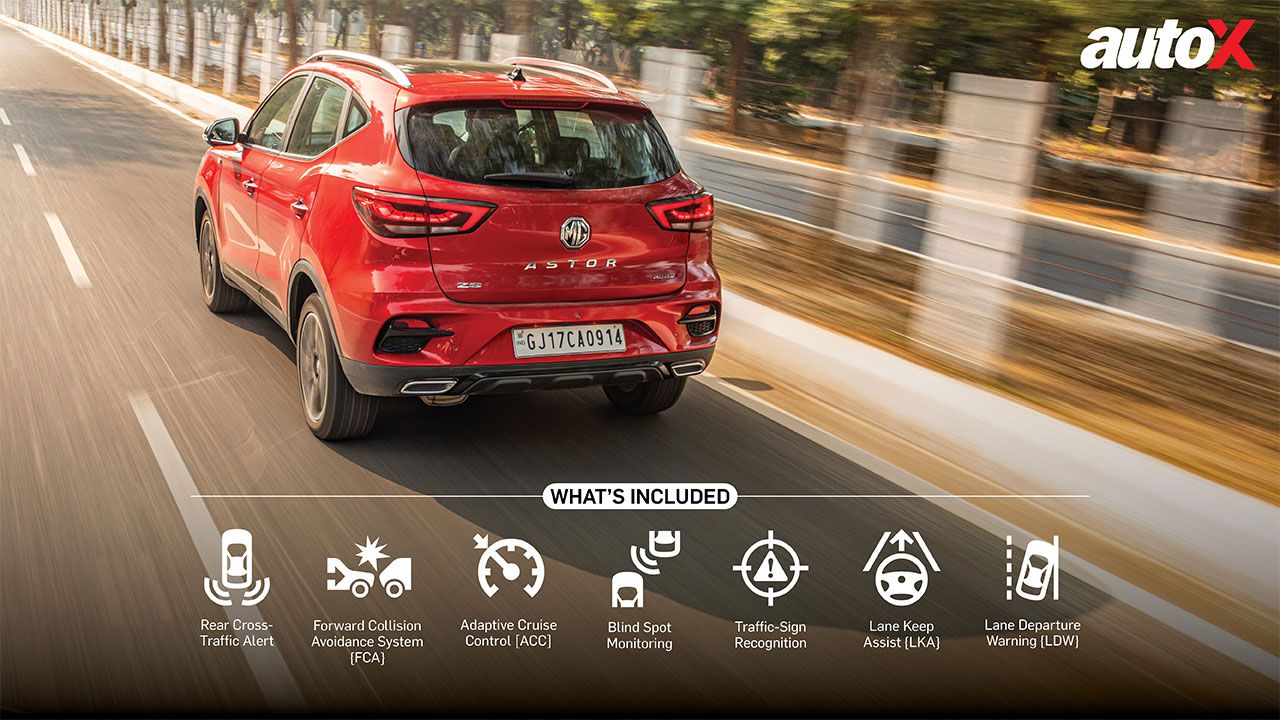
MG was one of the early adopters of ADAS in the country. In fact, it was the Gloster that first brought driver assistance systems into the country back in 2020, but it was a bit of a niche product and out of reach of the common public. The technology soon made its way to the Astor and Hector, establishing MG as a key player in the Indian ADAS market. The question is – how good is MG’s driver assistance system, or the Astor’s in this particular case?
The Astor is well-equipped with ADAS features, and on paper, its driver assistance system is close to those in Hyundai, Kia, and Tata vehicles despite being nearly three years old. It employs a camera and a radar at the front, along with two radars at the rear, making it one of the best in the test in terms of hardware. That said, unfortunately, it didn’t perform as consistently as other vehicles here – something that became evident from the very beginning. During our AEB tests, the MG’s FCW / AEB failed to detect our knight. Consequently, it didn’t initiate any kind of braking manoeuvres in all three attempts – no warnings, no beeps, nothing. Perhaps the system might have responded if a real person, cyclist, or vehicle had been used as an obstacle, but we weren’t willing to risk any life or limb for these tests. Moreover, all of the other vehicles detected the obstacle, making the MG the only outlier in AEB tests.
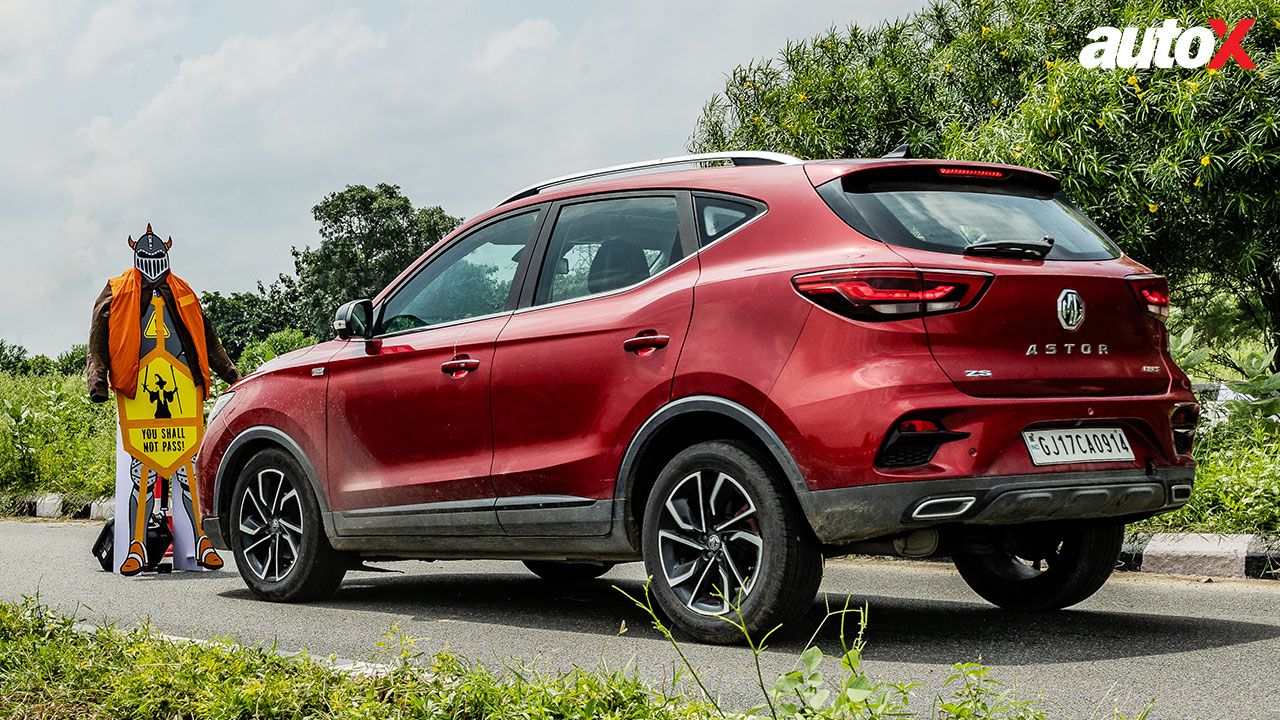
Things improved when we put Astor’s ADAS to test in real-world conditions. First of all, like other cars, the Lane Keep Assist (LKA) and Lane Departure Warning (LDW) work very much in a similar fashion, getting activated above 60km/h and keeping the vehicle firmly between the lane markings. That said, when the system detects that the vehicle is swerving out of the lane, you feel what can only be described as quite an aggressive steering pull-back, which is further exacerbated by its light and lifeless steering feel. The LKA keeps the vehicle centred in the lane, but its constant steering adjustments and movements aren’t the most confidence-inspiring. It never feels settled or in total control, largely because of the combination of the ADAS and the vehicle’s dynamics. It doesn’t work as cohesively as it should.
MG’s Adaptive Cruise Control gets activated from as low as 30km/h and includes the Stop & Go feature. Thankfully, this works well and doesn’t throw any ugly surprises. Just like the Kia and Hyundai, the Astor’s ACC can also work independently of LKA or LDW. However, at triple-digit highway speeds, it feels nowhere near as stable or reliable as any of the other vehicles on the test, again due to its sharp and constant steering inputs. We tested the system on the Eastern Peripheral Expressway just outside of New Delhi, and set the cruise speed to 120km/h. Let’s just say that it wasn’t a wise idea, for the Astor steering as well as LKA felt nervous at these speeds, and again, the system couldn’t stop making adjustments throughout the course of the journey. To make matters worse, the bumpy nature of the expressway didn’t help the Astor’s case. So, in the end, we decided to disengage the system completely. In all of the other vehicles, it wasn’t as big a concern as it was in the MG. It was a bit of a disappointment to us, for, we believe, the ADAS features are the most useful during long hours of driving and with their safety net they make long journeys a little less stressful and effortless.
Thankfully, the Astor offers quick-access buttons to turn the LKA, LDW, and ACC functions on or off, although they are on the stalks and not on the steering wheel. However, this makes engaging or disengaging these functions easier compared to the Mahindra, at least. Another feature worth highlighting is the Rear Cross Traffic Alert, which worked rather effectively during the test. That said, overall, the MG’s ADAS left us wanting more, especially in terms of consistency and reliability, and it was hard to put full faith in it.
Mahindra XUV700 ADAS: The OG
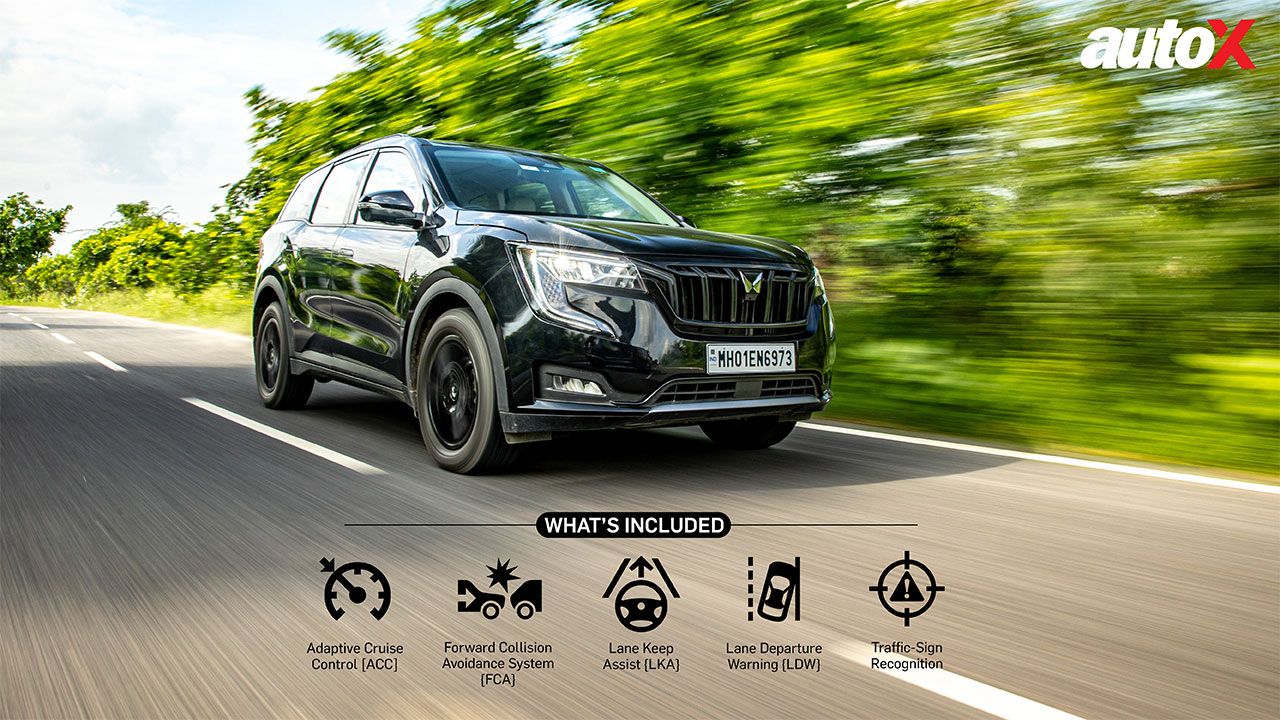
When Mahindra launched the XUV700 in 2021, it became the first made-in-India vehicle to feature ADAS systems. So, the credit for popularising driver assistance systems and making it a ‘mainstream’ phenomenon must go to Mahindra and the XUV700. In our previous ADAS comparison test a year ago, the XUV700’s system performed well and lived up to our expectations, even though it wasn’t the most refined system and lacked the consistency and finesse of some of its rivals. Are things any different now? Can Mahindra’s ADAS compete with the newer and better-equipped systems from rival manufacturers?
The XUV’s ADAS suite includes features similar to those found in the Honda, but it misses out on a couple of features offered by Hyundai / Kia, Tata, and even MG. It offers Forward Collision Warning and Automatic Emergency Braking (AEB), Lane Keep Assist (LKA), Lane Departure Warning, and Adaptive Cruise Control (ACC) with Stop & Go capability, but misses out on Rear Cross Traffic Alert and a couple of other features.
The XUV’s AEB turned out to be as consistent and decisive as those in the Honda and Hyundai / Kia models. It was set for ‘Early’ detection, and it performed as expected – it warned the driver well in advance before bringing the vehicle to a halt. Compared to the others, you can feel the weight transfer in the XUV as it brakes heavily. Now, this is not surprising, given its high-riding, heavy SUV underpinnings, and a relatively softer suspension setup. Under heavy braking, there’s significant pitch as the vehicle brings all that momentum to a halt. However, its braking consistency or obstacle detection was just as good as the best-performing AEB systems on the test.
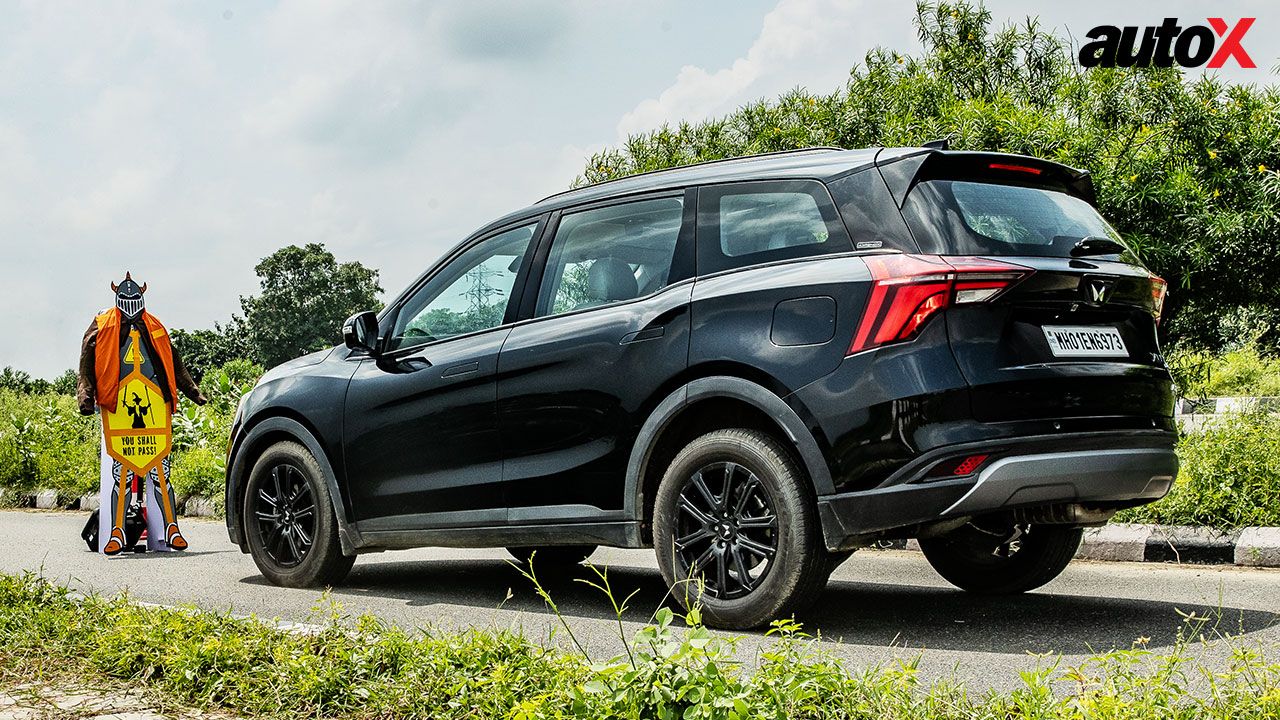
Notably, Mahindra’s user manual is the most detailed when it comes to explaining ADAS systems. For instance, it clearly states that the AEB will only function above 10km/h and that it won’t work above 85km/h, with the maximum deceleration capped at 50km/h. So, for instance, if you’re driving at 70km/h, and the car detects an impending collision with a pedestrian, a cyclist, or a vehicle, it will only reduce the speed by 50km/h rather than bringing the vehicle to a complete stop. While this applies to almost all AEB systems, few manufacturers divulge this information. So, kudos to Mahindra for offering these details to owners.
On public roads, the XUV’s Lane Keep Assist and Lane Departure Warning work similarly to those in other vehicles. However, there are a few differences, which you may or may not like. Unlike Hyundai and Kia’s systems, the LKA and LDW functions on the XUV can’t operate independently; they always work in unison, so below 60km/h, neither function works unless Adaptive Cruise Control (ACC) is activated. The ACC has Stop & Go capability and can be engaged from as low as 30km/h. However, the LKA doesn’t automatically centre you in the lane – you also need to activate Smart Pilot Assist (SPA) for that. And it only works with ACC activated, which means that it won’t work independently like in other cars.
The other problem is that the XUV’s driver assistance systems are a bit fidgety to turn on and off, as there are no dedicated controls or buttons on the steering wheel, except for ACC. So, you have to navigate through multiple menus on the instrument cluster to change the settings, which can be quite distracting while driving.
At highway speeds, the LKA+SPA and ACC work efficiently. However, the steering inputs and corrections are quite pronounced, making the wheel feel like it’s constantly moving. The ACC, too, works well and detects and follows the vehicle in front without any trouble, maintains speed and comes to a full halt when needed. However, the deceleration at high speeds isn’t the smoothest and can be abrupt at times. Similarly, when the ACC brings the car to a halt, it momentarily releases the brakes and adjusts the distance to the vehicle in front. This can be a bit disconcerting, as it may feel like the system has disengaged. Let’s just say it’s not the most confidence-inspiring feature.
Overall, Mahindra’s ADAS system is impressive, although it lacks the final touch of finesse as compared to the systems from Hyundai, Kia, and even Tata. This minor shortfall might lead to some reservations about fully trusting it.
Tata Curvv EV ADAS: The New Kid on the Block
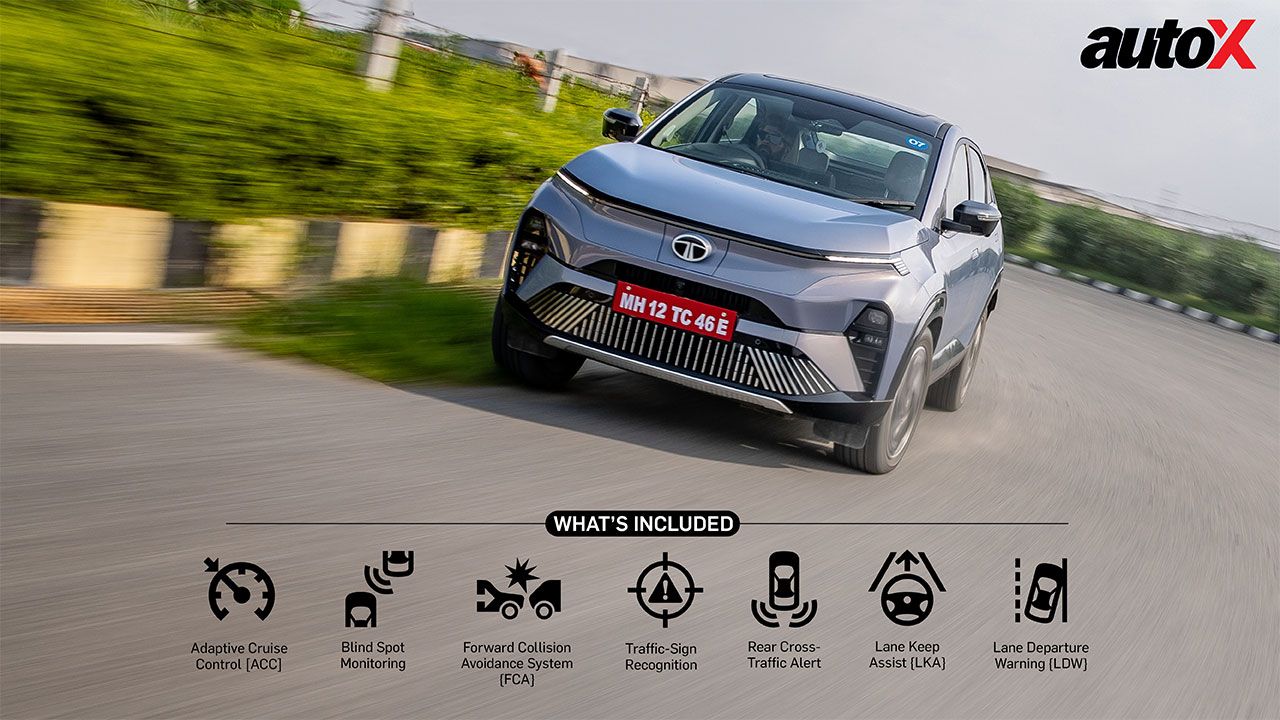
Tata joined the ADAS party towards the end of 2023 with the launch of the updated Safari and Harrier. And now, with the arrival of the Curvv EV, they have made even more advancements with their driver assistance systems. So, naturally, that’s the Tata vehicle we picked up for this test. How does the Curvv’s ADAS fare against its established rivals? Read on to find out.
The Curvv EV is one of the better-equipped ADAS vehicles on the test, as it gets most of the features and functions expected from a modern and premium EV in this space. So, in addition to basic functions like FCA / AEB, Lane Keep Assist, and Lane Departure Warning, it also gets Adaptive Cruise Control with Stop & Go feature, Rear Cross Traffic Alert, Rear Collision Warning, Blind Spot Monitoring, and AEB for Turn / Junction, among others.
In our AEB test, the Curvv performed exceptionally well, without missing a beat. The detection and braking process was precise, stopping the vehicle in time without throwing any surprises. Perhaps the only thing that makes the whole experience a bit alarming is its aggressive braking. The notion of ‘phantom braking’ becomes a tangible reality in the Tata, for it is one heavy bruiser, and when it comes to an emergency halt, you sure can feel the inertia and weight transfer. However, in terms of consistency and efficiency, Tata’s AEB is among the best. Not to mention, it also activates the hazard lamps as soon as it brakes and uses a soothing chime for warning bells rather than loud beeps or bangs, adding a premium touch.
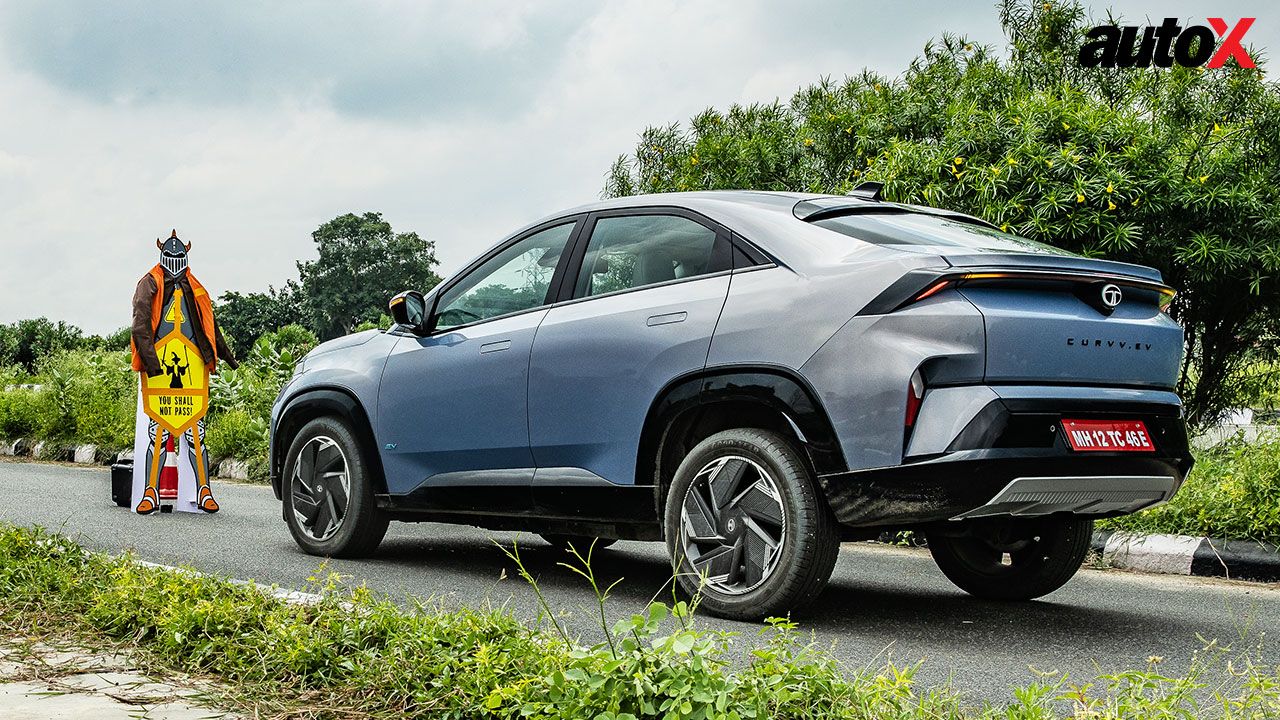
If there’s one thing that surprised us, it was the charger flap. Under heavy braking, it would open automatically and then retract once the braking was complete. Now, we aren’t entirely sure if this is a built-in safety feature or simply a malfunction.
The Curvv’s other ADAS features performed equally well. Like others, it’s LKA and LDW only get activated above 60km/h. The steering inputs and corrections are mild, and thanks to its impeccable dynamics, the body control and steering movements are predictable and well-calibrated. That said, much like the XUV700, the LKA will only keep you centred in the lane once the Adaptive Cruise Control and Adaptive Steering Assist are activated. It doesn’t work independently like Hyundai & Kia’s and MG’s systems.
The ACC feature worked flawlessly. It adjusts the speed to match the vehicle in front and accelerates or decelerates smoothly depending on the set distance. This is where the Curvv felt the most sophisticated – since it uses its electric motor’s regen mode to decelerate the vehicle when it reduces or matches the speed of the vehicle in front, the whole process is progressive and gentle instead of abrupt or aggressive. This is one area where the integration of ADAS in an electric drivetrain works better than in a conventional ICE vehicle.
The Curvv’s ACC and lane functions were particularly convenient at expressway speeds. While cruising at 120km/h, the system makes driving safer and more relaxed without feeling out of place. It doesn’t leave you second-guessing and inspires enough confidence to comfortably trust the system. Overall, it turned out to be one of the best-performing ADAS systems in this test, consistently performing well under all driving conditions. The only drawback is that it doesn’t offer the same level of adjustability as some of the other systems on the test, which means that you can’t use certain features, especially the Lane Keep Assist and Adaptive Steering Assist unless all required conditions are met.
Volvo XC40 Recharge: The King of the Hill, or is it?
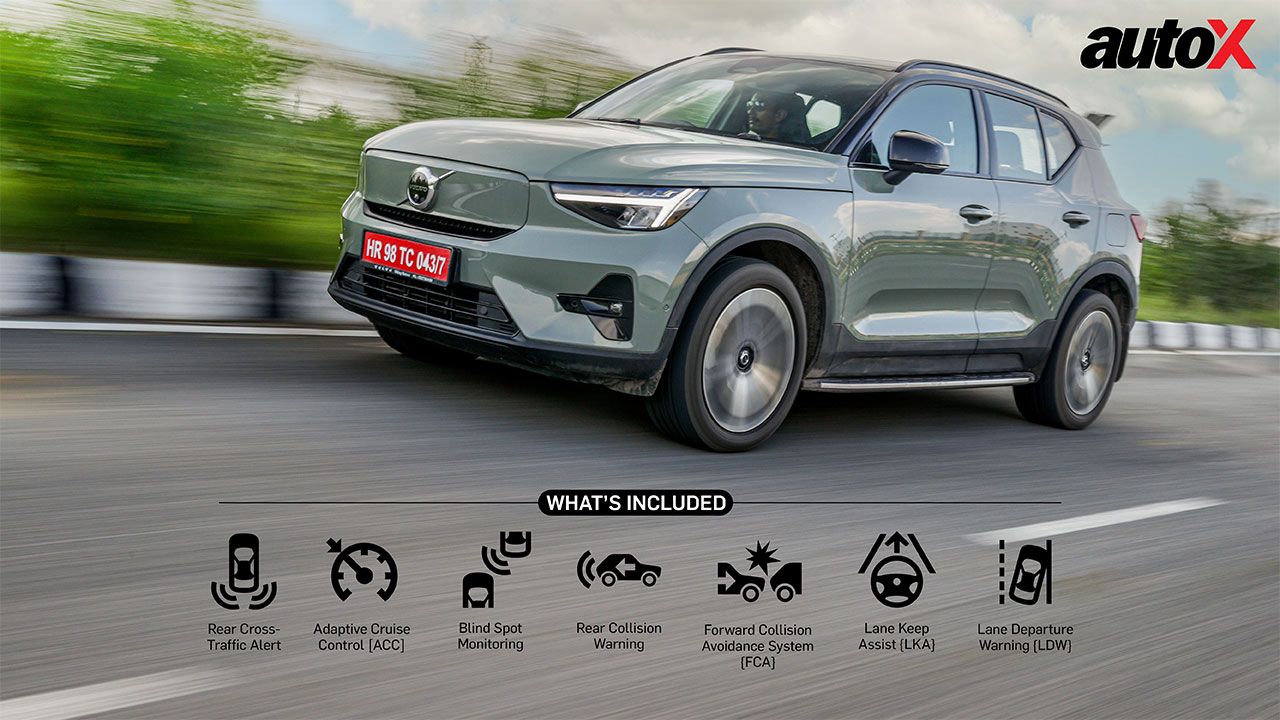
Technically, the Volvo was included only for representational purposes, given that the Swedish car brand is synonymous with safety in the automotive world. The Volvo’s role in this test, then, wasn’t to compete with the other contenders but only to show them ‘who’s the boss!’ So, did it outperform the rest of them as expected? Surprisingly, it did not. And here’s why…
In the Volvo, engaging the various ADAS features, or determining whether they are active in the background, is quite tricky. For instance, the brochure of the XC40 Recharge states that AEB is available (both front and rear) as default. However, in our AEB test, the system refused to detect our life-sized dummy and didn’t apply the brakes, which was quite unnerving. However, in the next attempt, we decided to activate Adaptive Cruise Control – unlike other vehicles here, it engages from just 15km/h. This time, AEB not only detected the obstacle but also braked in time. The catch is that ACC must be activated by pressing a button on the steering wheel on every single outing, and only after you’ve crossed the 15km/h threshold.
In the next two attempts for the AEB test, the Volvo did completely different things. In its second attempt, it slammed the brakes well before time, came to a momentary halt, released the brakes, and then mowed our poor knight down in a rather spectacular fashion. In the third and final attempt, it detected the knight but didn’t bother applying brakes, resulting in a collision with no signs of slowing down.
At this point, we were convinced that the AEB only functions when ACC is activated, but we were once again proven wrong during the real-world tests, where the Volvo did apply the brakes as it came very close to a vehicle in bumper-to-bumper traffic, suggesting that AEB is always on standby. However, the reason behind its decision to engage is still not clear to us. It has a mind of its own, to be honest. Nonetheless, when the Volvo did brake, it felt the most composed and surefooted vehicle of all. The braking was smooth without any judder or loss of traction, and the weight transfer and body movements were also well controlled. Plus, the seatbelt pretensioner also tightened firmly as the brakes were applied, keeping you secure in place.
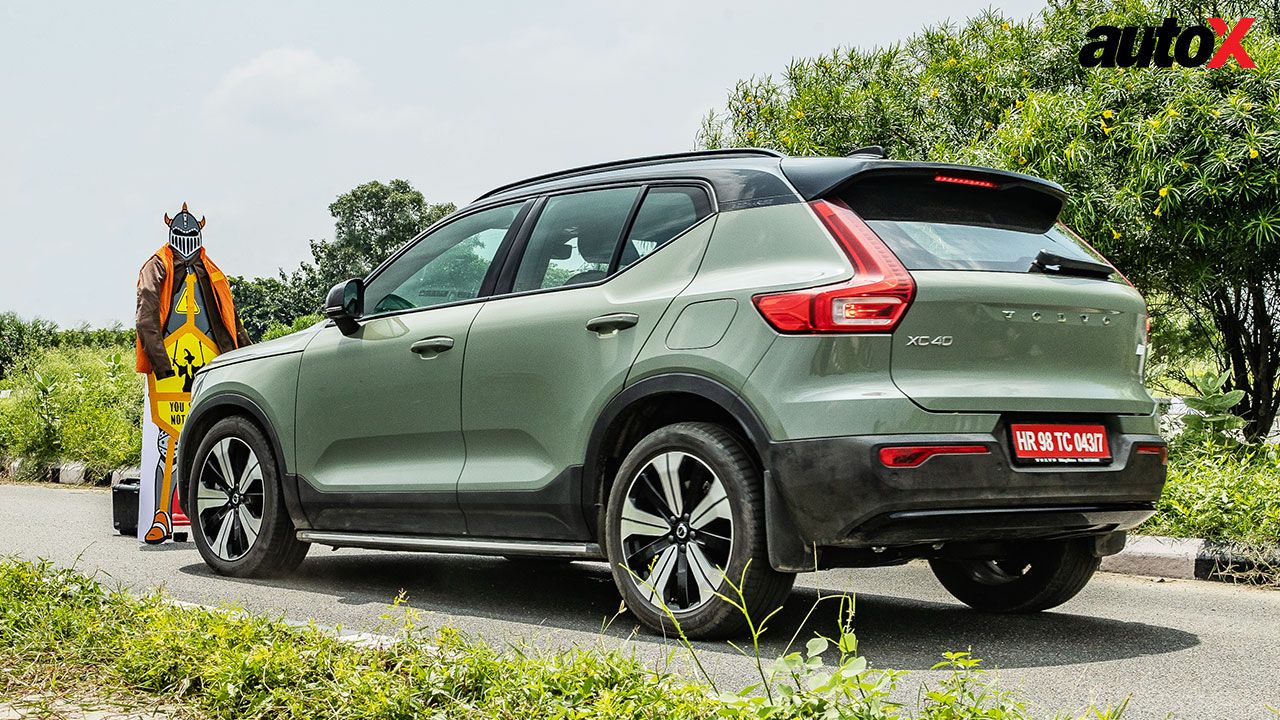
As for its LKA feature, it works in tandem with ACC. The LDW, though, activates as soon as you cross 60km/h. These features work brilliantly, and you can feel that it’s a superior system, given how confident, predictable, and precise the steering movements of the vehicle are. That said, the steering inputs can be a little aggressive when switching lanes – the tug at the wheel is quite strong. A minor niggle with Volvo’s system is the lack of adjustability – it works on predefined settings, so you cannot alter the distance for AEB, or change the intensity of acceleration for ACC. However, you can adjust the distance from the vehicle in front while using the adaptive cruise.
Also, unlike other India-specific systems, which offer some flexibility to adjust for Indian driving conditions, the Volvo’s system is a bit more rigid, engineered and tuned primarily for developed nations. That said, when the conditions are perfect, the Volvo’s ADAS works flawlessly, exhibiting the brand’s expertise with well-judged and effortless inputs. Overall, it’s a bit too polished and sophisticated for Indian driving conditions, making it less consistent than other systems in our tests.
Verdict
After testing the ADAS systems extensively, we came away with some interesting insights, the most important of which is that you must never rely on these systems blindly! And that’s common sense because, after all, ADAS stands for advanced driver ‘assistance’ systems. These systems are meant to aid us and not replace or rid us of our responsibilities.
In the end, it’s simply a matter of trust and confidence. And while all contenders here have more or less similar features and assistance systems, however, some are obviously more equal than others. So, before we wrap up this feature, let’s give you the final standings – starting from the most unpredictable system to the most consistent in this test.
The MG Astor stands at the bottom of the list in seventh position, sadly, simply because it wasn’t consistent enough.
In sixth position, we have the Volvo XC40. To be honest, it has the most refined system of all, but in terms of consistency and building driver confidence, it didn’t perform up to expectations during our tests. Also, it offers limited features and lacks the option to either fully activate or deactivate all the systems.
Now, the top five are quite evenly matched. However, if we had to rank them, the Mahindra XUV700 would have taken fifth place. During the test, its AEB was consistent, and the other systems performed as expected. However, it lacks that last bit of finesse, which was a bit of a deterrent.

At number four would be the Honda. It’s easily the most consistent system of the lot, and it performed like clockwork in all tests. However, it’s not without a couple of limitations. First, it has a limited feature set, and second, it relies solely on a camera-based system, which will handicap its performance in bad weather driving conditions.
Rounding out the podium in third place was the Tata Curvv EV. The Curvv’s ADAS was consistent in all driving conditions, felt the most sophisticated, and seemed to be fine-tuned for our road conditions. The only thing that stopped it from taking the top spot is, perhaps, the fact that it lacks the adjustability to choose between different modes according to your convenience.
The top two spots are occupied by the Korean siblings – Kia and Hyundai. In terms of ADAS features, these two are more or less identical. In our test, however, the Seltos performed slightly better than the Verna.
What impressed us the most about both the Kia and Hyundai’s ADAS systems is their excellent sophistication, impeccable consistency, and remarkable suitability for our chaotic driving conditions. They also offer high levels of adjustability, allowing you to choose or alter functions based on your requirements or preferences. In fact, it’s the level of adjustability that made the Hyundai / Kia our pick of the lot. Of course, they aren’t perfect in all scenarios and have their foibles, but they are the most trustworthy systems of the lot nonetheless, and, hence, deserve the top accolade.
While the introduction of ADAS in mass-market cars indeed adds an extra layer of active safety in our daily driving, it’s worth remembering that these driver assistance systems are not without limitations and challenges. During the test, we tried to account for as many variables as possible, but it’s almost impossible to replicate the infinite possibilities of real-world driving conditions. That said, we did notice some anomalies while testing the ADAS systems in almost all the cars. And here’s a quick rundown:
AEB/FCW is not a one-stop shop...
If a stray cow or a barrier suddenly appears in front of your car, AEB is unlikely to detect it, let alone bring the car to a halt. Now, AEB is only designed to detect pedestrians, cyclists / motorcyclists, and vehicles – and that’s about it. What’s alarming is that there are instances when it may even fail detect to these! We observed this with our dummy – none of the cars could detect it until we dressed it in a jacket and spread its arms wide open. Even then, the MG still refused to detect it.
Feeling under the weather?
One of the biggest challenges for the ADAS system is maintaining consistency, especially during bad weather conditions. On a cloudy or overcast day, ADAS systems may not be as effective as they are in bright, sunny conditions. Now, you might think this only applies to the Honda Elevate here, for it solely relies on a camera-based system and not radars. However, that’s not entirely true. All the vehicles in this test use a high performance camera along with radars. So, while the Honda’s system may suffer the most, the others, too, will face difficulties in their operation.
Stranger Danger: ahead of the curve?
Imagine driving around a blind corner, and suddenly a jaywalker, a cyclist, or a vehicle cuts across your path. Will AEB kick in and save the day? Well, technically, it should, but as we discovered, it doesn’t. During the test, we placed the same dummy we used for the straight-line braking test around a blind turn. Each car was then driven at 20 – 25km/h, but none could brake in time. The Honda, Kia, and Hyundai were the only ones to detect the dummy, but it was too late to brake by then...
It doesn’t always go hand in hand…
While the adaptive cruise control in all of the vehicles worked really well, it can pose a problem when you come across an intersection or a roundabout because once the lead vehicle moves out of the way, the system won’t detect a junction, and will start accelerating in a straight line! Our recommendation is to use ACC strictly on highways / expressways and deactivate it as soon as you enter a town or approach a freeway exit.



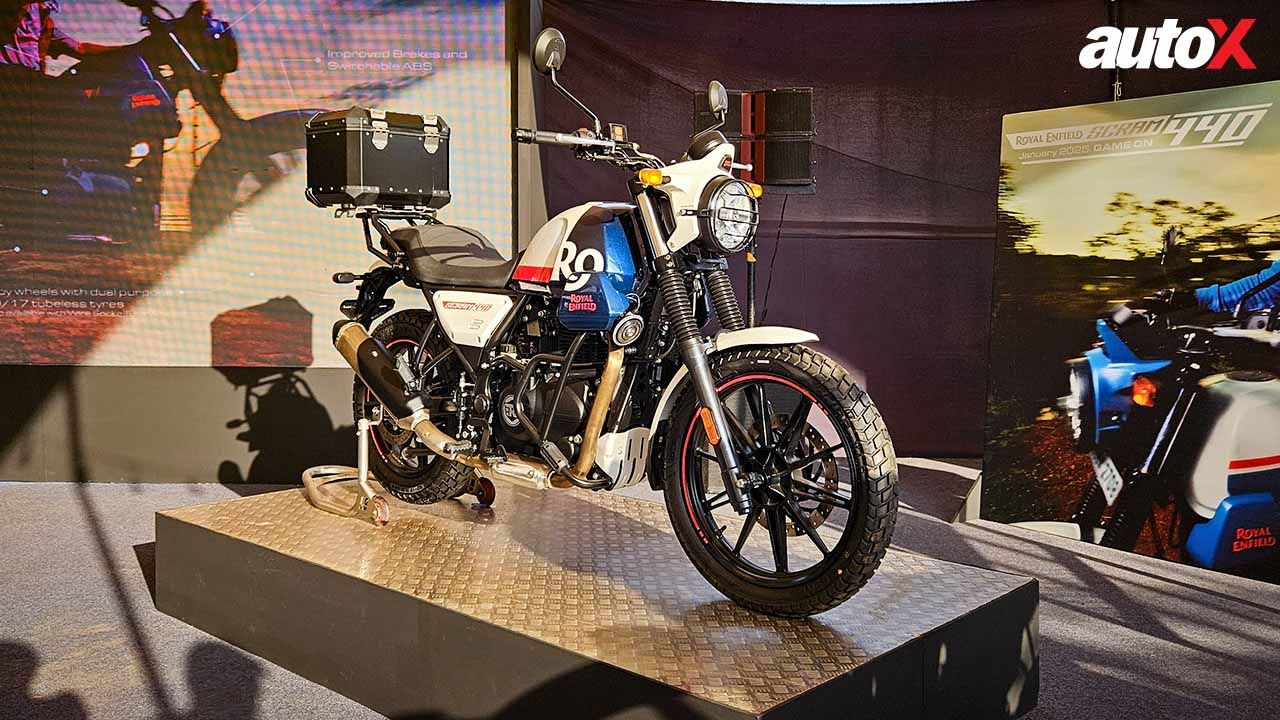

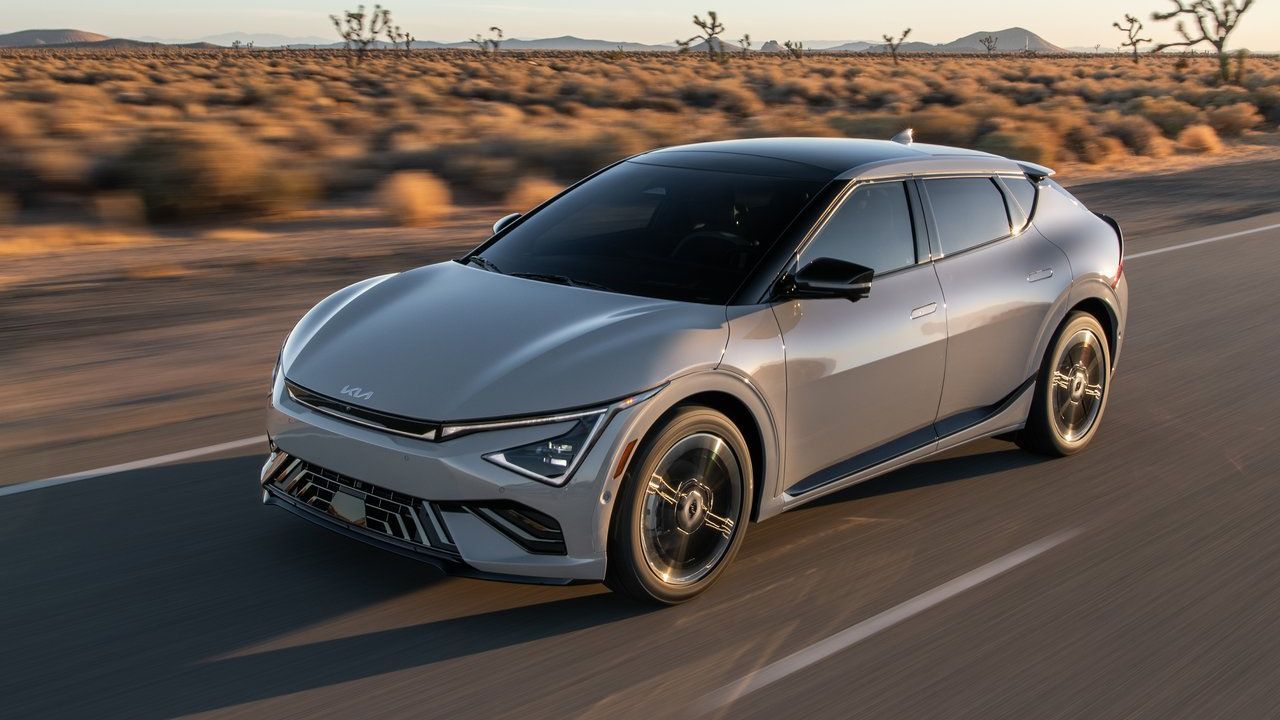
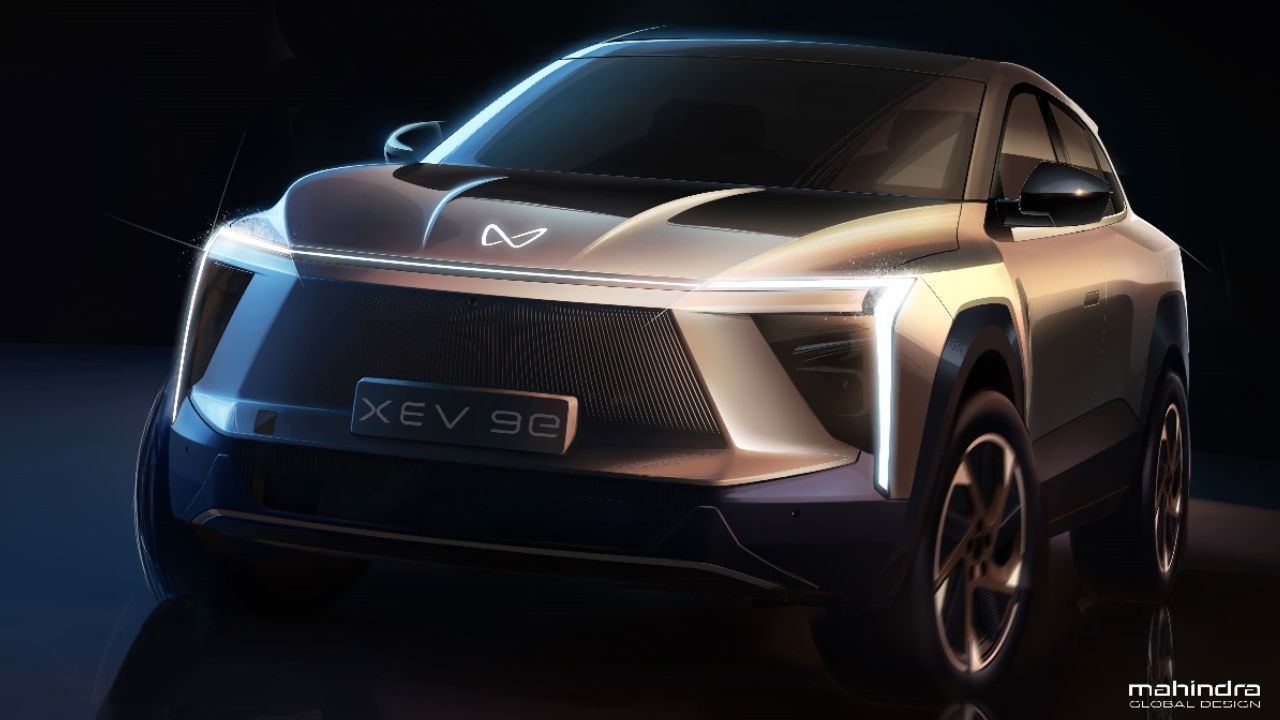
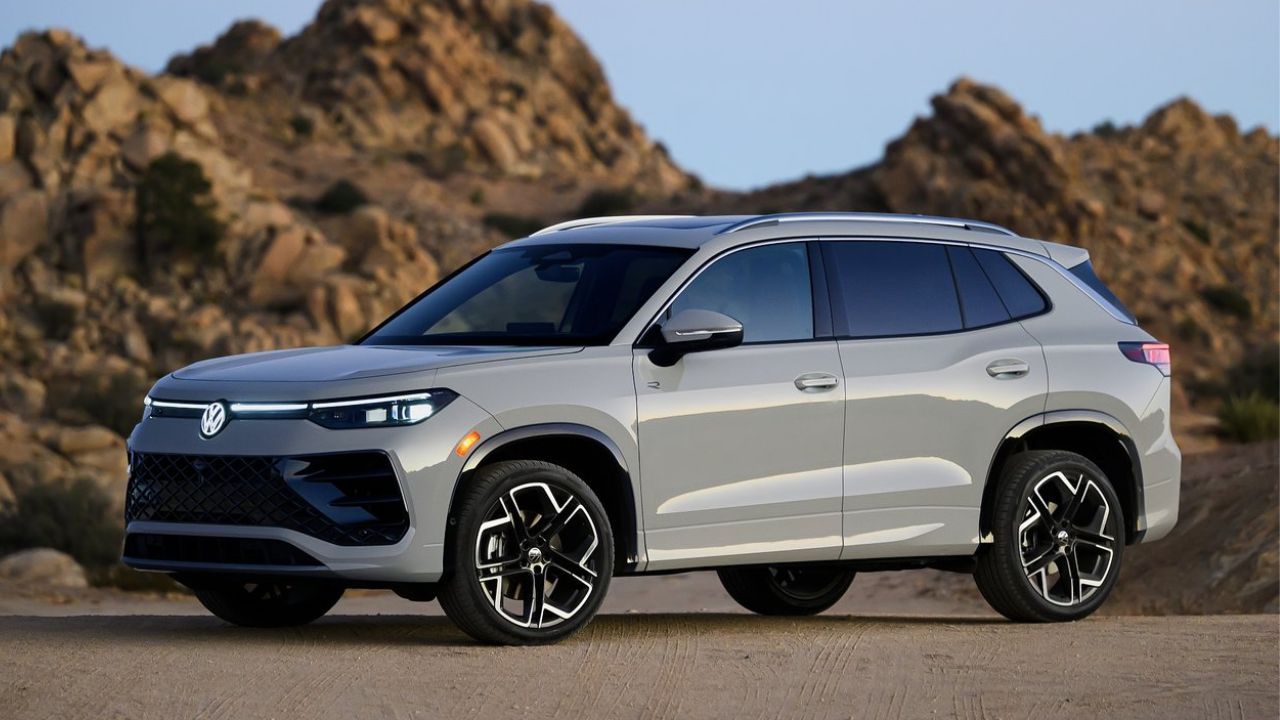
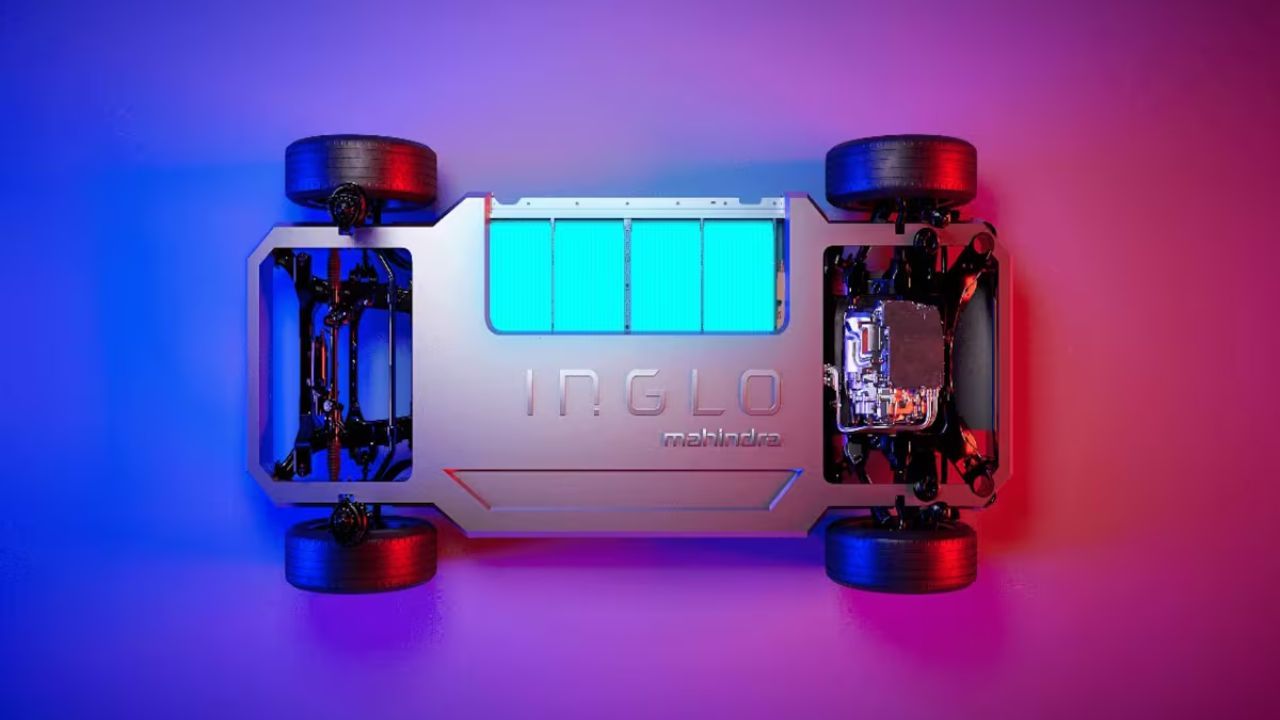
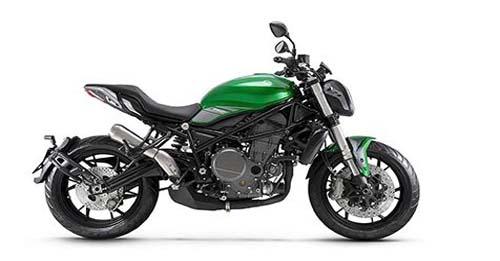
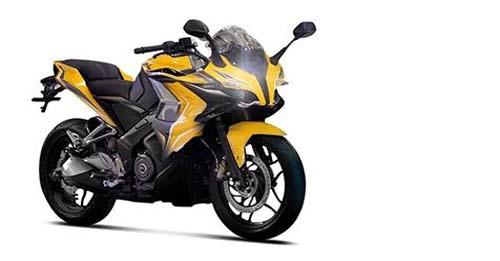
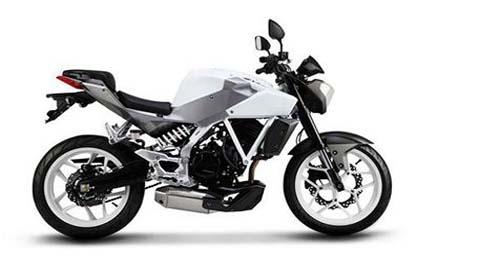
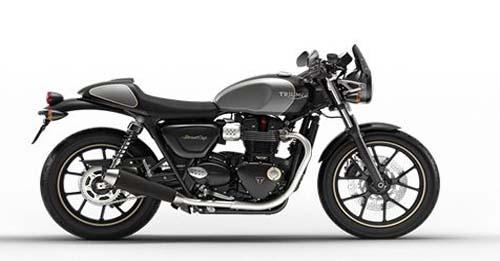
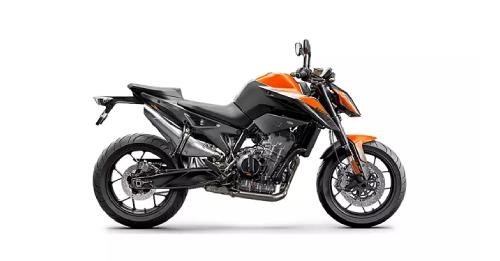









Write your Comment on